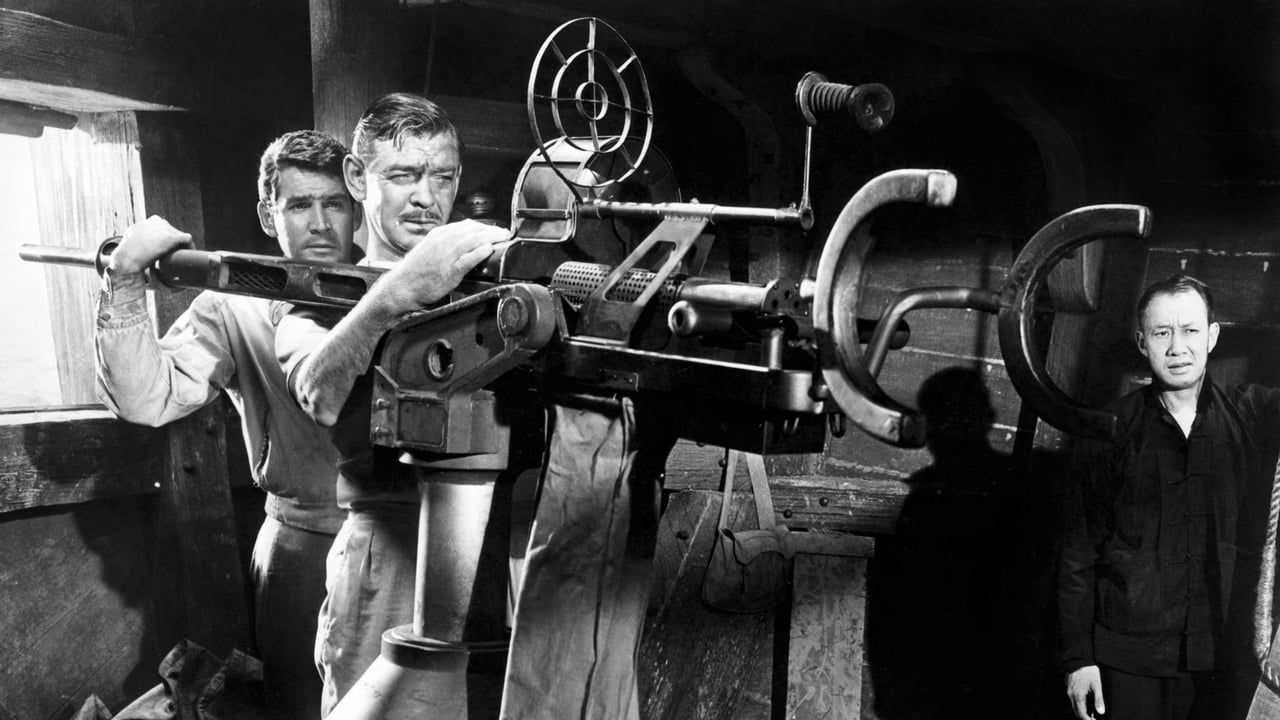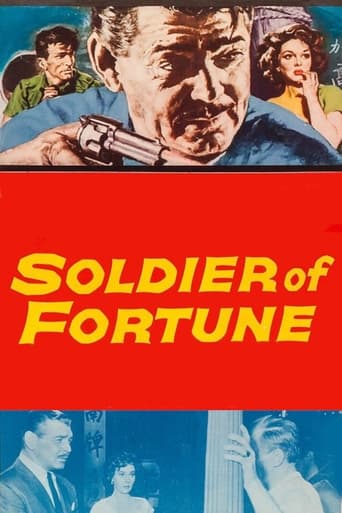

CinemaScope lenses by Bausch & Lomb. Color by DeLuxe. Produced by Buddy Adler. Copyright 1955 by 20th Century-Fox Film Corp. New York opening at the Roxy: 27 May 1955. U.S. release: June 1955. U.K. release: 24 October 1955. Australian release: 29 March 1956, Sydney opening at the Regent. 8,603 feet. 95½ minutes.SYNOPSIS: In search of her missing photographer husband, Jane Hoyt (Susan Hayward) arrives in Hong Kong and learns at the U.S. Consulate that her mission is futile, that neither the United States nor the British government can help her. She feels that she must try nevertheless, and registers at a hotel that services a conglomeration of businessmen, servicemen, entertainers, and ne'er- do-wells from all over the world. Jane gets in touch with Inspector Merryweather (Michael Rennie), of the local marine police, who, although unable to help her officially, promises to do all he can for her on his own. He asks her to identify two cameras that the police had picked up from a junk captain at the harbor. She confirms that they belonged to her husband. Merryweather then suggests that she inquire at a place called "Tweedie's". Jane is about to be thrown out of Tweedie's when Rene Chevalier (Alex D'Arcy) joins her at the table as if she were waiting for him. He tells her that he knew her husband and had seen him one night with Fernand Rocha (Mel Welles) and a girl named Maxine Chan (Frances Fong). With nothing more than this information she contacts Maxine, who leads her to Hank Lee (Clark Gable), of whom Merryweather had warned her.COMMENT: Although it took good money on the strength of its Hong Kong in CinemaScope background and its starring twosome, "Soldier of Fortune" is a rather ordinary tale with inconsistently motivated Mills and Boon principals forced into a combination pulp novel romance and comic strip adventure. In this latter connection, keen movie buffs will notice some remarkable similarities between "Soldier of Fortune" and Milton Caniff's "Terry and the Pirates" — especially as regards some of the bizarre background characters which give the movie some welcome jolts of interest, thanks to the efforts of players like Anna Sten (the former Goldwyn leading lady of the 1930s), Tom Tully, Russell Collins and other assorted misogynist bar habitues.OTHER VIEWS: Another early CinemaScope film in which the accent is firmly on the CinemaScope scenery (this time the travelogue cameras focus on Hong Kong) rather than the juvenile dialogue, stock characters and "Boys Own Paper" plot. Critics are usually tempted to say at this point that the players do their best — but they don't really. If they'd had a grain of sense they would have played it all tongue-in-cheek; but no, they're perfectly serious about the whole puerile business. Dmytryk's flat-footed direction matches the pedestrian plot. The appearance of Anna Sten in a minor role is some compensation for movie buffs, but otherwise the whole film, aside from the scenery and the lushly romantic music score is a very ordinary, very tepid and very dated anti-Chinese Communist tract. - JHR writing as George Addison.
... View MoreI agree with just about everything Greg said about the film. Perhaps I am wistful about the old Hollywood and the way movies were made back then. The teaming of Gable and Hayward is perfect. She could hold her own against any male lead. Gable was still in his prime and chews up the scenery. Susan Hayward, so strong and yet so vulnerable, was elegant in her circa 1954 wardrobe. The photography is splendid with so many great Hong Kong locations. It reminds me of "Love is a Many Splendored Thing," also from 1955. But, as Greg pointed out, it is the majestic, sweeping score by Hugo Friedhofer that lingers in my mind. I want that soundtrack! Overall, I loved the movie. It was exciting and had a Hollywood happy ending. They just don't make them like they used to!
... View MoreThis film packs absolutely no excitement other than Michael Rennie excited over American cigarettes.Susan Hayward is Jane again. Too bad it's not Froman-but rather Jane Hoyt, whose husband stepped into Communist China and can't get out. Jane comes to Hong Kong to find out what's going on and meets up with Gable, who is suspected of being a gangster, but British officer, Michael Rennie, can't get anything on him.Hayward goes to Macao on a tip and her guide is soon escorted off the boat and hustled to Red China as well. We never know what happened to this poor guy.When Gable and his crew go into China to rescue, Hoyt, a colorless Gene Barry, they encounter no opposition on the roads leading out. Not even a shot is fired. They get on the boats and encounter some machine guns with Hoyt taking a bullet to the arm. Suddenly loads of boats show up and all blend in on the seas.Of course, Hayward and Gable have fallen in love so the question remains who she will choose. Remember how she took her vows for better or worse in "With A Song in My Heart?" If you can think of what happened to the marriage with David Wayne, you will get the answer.Of course, it's 1955 so Hayward can be forgiven for this lackluster film as she shined so eloquently in "I'll Cry Tomorrow." that very year.
... View MoreMiss Susan Hayward was a feminist heroine: tough, smart, edgy, beautiful beyond measure. Caught in a court fight with her estranged husband, 20th was forced to shoot Miss Hayward's scenes at the studio in Beverly Hills...no problem. They could have been shot on Mars because Susan Hayward plays this part to the hilt. Miss Hayward and her co star Clark Gable were natural stars and natural actor..together they work magic...The ending is particularly modern: Miss Hayward meets up with Clark Gable and instead of clinching and saying they love each other...well just see the movie, likely one of the most adult endings of all time.
... View More